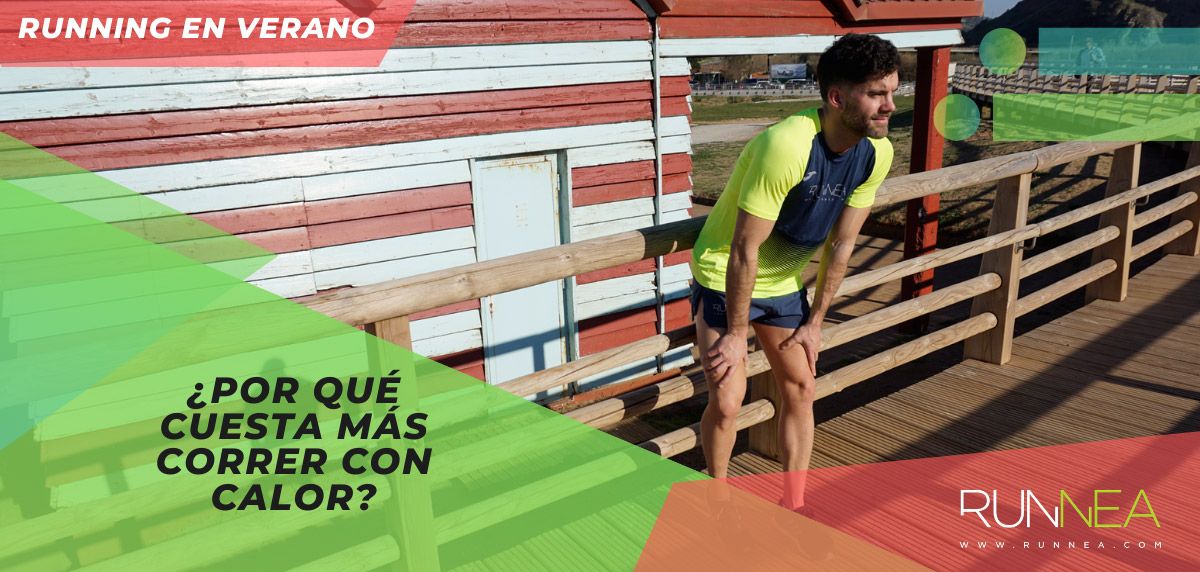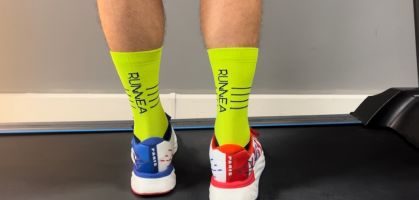Stay with the concept of thermoregulation because our body's ability to adapt to different temperatures is the basis for answering the question: Why is it harder for us to run in the summer heat? We take advantage of this post to tell you everything you need to know to run in summer, and "not die" in the attempt.
The perception of effort increases as a direct consequence of the fact that it is difficult for runners to dissipate the heat when we go running in hot and humid conditions. This is where thermoregulation comes into play.
It is a truism, but one of the most successful strategies for running and training in summer is to perform physical activity during the hours when the heat is at its lowest intensity. However, we must be aware that this time slot is not always feasible for everyone. Thus, "we are obliged to adapt our training at those times of the day when the heat is intense. A decrease in intensity and duration will be the best initial measure, in addition to hydration," says in detail Iker Muñoz, sports director of Runnea Academy.
What are the main dangers for runners training in excessive heat?
The risks runners run (never better said) when running in very hot weather are not only varied, but can also lead to really serious pathologies. These range from a more than possible dehydration to a heat stroke, which ends with a fatal outcome, and should be avoided at all costs.
"For all these reasons, it is necessary to be very careful when exercising in the central hours of the day, and if you do so, be aware that at the slightest sign that something is not right, stop exercising," Muñoz points out.
- You may beinterested in: How does technical running clothing give you that extra boost you need in every workout?
So, if you've come this far, you may be asking yourself the question:"Is there really an advantage to running during the summer? Of course, there's no doubt about it! Training, or physical activity, is necessary at any time of the year be it winter, spring, summer or fall. "Fortunately, our body is able to adapt to exercise when it's hot. We sweat earlier, plasma volume (the liquid part of the blood) increases, we are able to tolerate a higher external temperature, etc... so the benefits are obvious," says our Runnea coach.

Hydration, key section to take care of in any training session
However, as Iker Muñoz clarifies: "without external means, it is really very difficult to reduce the internal temperature during exercise. However, it is in our hands to favor this thermoregulation process by wearing appropriate running clothing according to the weather, while at the same time we are obliged to maintain correct and continuous hydration".
In this important section on hydration, it is necessary to point out that long-distance runs and prolonged training entail a significant loss of water. This circumstance leads us to use the resource of mineral salts as a complement to our necessary water intake, because "they help to absorb more water, and thus minimize its loss. However, we must also be clear that we will never be able to replace as much water as we lose, so we will always have a negative water balance," Muñoz points out.
Running by feel or by pace: Which is better?
Dressed in our favorite outfit, Running shoes on and ready and willing to run on the asphalt, there is another variant to solve, the fact of whether to go out to run by sensations, or rather looking at the pace of race we want to take. "At first I would take into account the perception of effort rather than speed. The important thing is to run safely, the pace will come later, when we have adapted to training in hot environments," says Iker Muñoz. The maxim is clear: train, yes, but always with judgment and a clear head. Safety, above all.
- You may be interested in: Best running shoes value for money, Runnea's selection.
The theory is very well explained, but when put into practice it generates some confusion. For example, a basic recommendation when doing a demanding training series, the most logical would be to carry it out in the less bad hours of heat, but given this impossibility, and provided that "these sessions are mandatory, I would begin to introduce them progressively (both in terms of volume and intensity). In addition, I would make sure to have a water source nearby where I can hydrate and get wet to reduce heat stress." The word of an experienced trainer. Better safe than sorry.

Strategies for safer summer running
And to finish off the post we also conclude with other practical recommendations to make training in the summer more bearable and bearable. By the way, they are interesting and even mandatory because they are obvious.
- Run based on the effort made, and not only taking into account the pace.
- As far as possible, run at times when solar radiation is lower, either early in the morning or late in the afternoon.
- Plan routes in which you can run in shaded areas, and not be all the time running in the sun.
- Stay hydrated at all times during training. It is also a good idea to make a road map with water sources.
- Wear appropriate clothing, with technical fabrics that are highly breathable and wick away perspiration.
All in all, despite the heat, taking the necessary measures and precautions, running in summer also helps us to be more efficient runners, especially when it comes to better regulating our body temperature.
Read more news about: Running Training





















